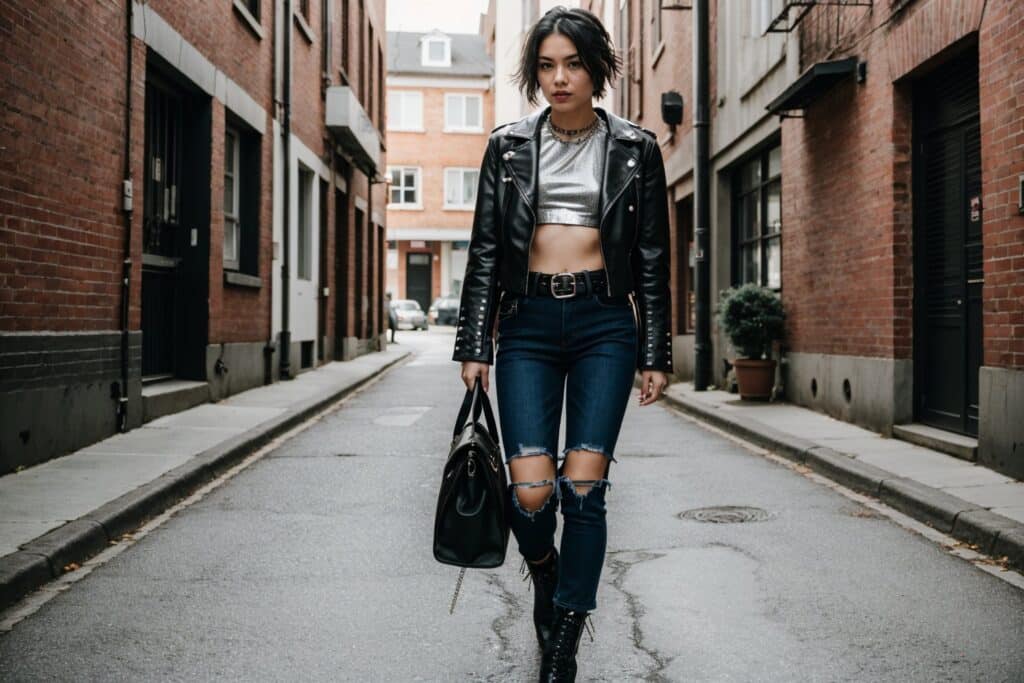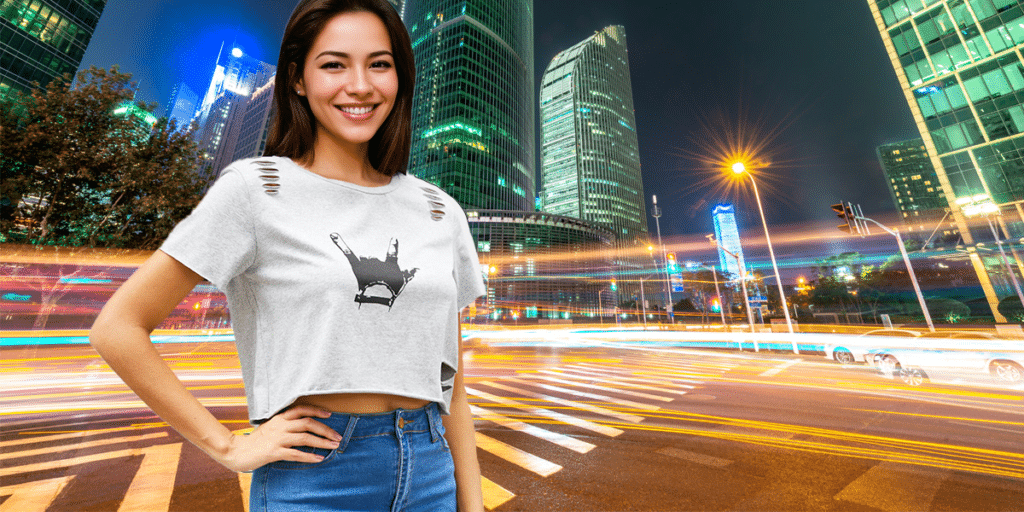Are you curious about the evolution of womens streetwear? Have you ever wondered how this trend has become increasingly inclusive and diverse? Womens streetwear has been a popular trend in recent years, characterized by oversized clothing, sneakers, and graphic tees. This article will explore the evolution of womens streetwear, including key elements, popular brands and influencers, styling tips, its impact on culture and society, and how it’s becoming more inclusive and diverse.
Evolution of Women’s Streetwear
Womens streetwear has been around since the 80s and 90s and has been heavily influenced by hip-hop and skate culture. Clothing brands, such as Stussy and Supreme, were among the first to create streetwear clothing for women. As the trend grew, more brands started to emerge, offering a wider range of streetwear clothing for women.
Initially, women had to adapt the clothing to fit their style, as it was primarily designed for men. However, as the trend grew in popularity, more brands started to create clothing specifically for women, making the clothing more inclusive. Women of all shapes and sizes could find clothing that fit their style.

Women’s Streetwear: From Subculture to Mainstream Fashion
- Womens streetwear evolved from hip-hop and skate culture in the 80s and 90s and is now a mainstream fashion trend.
- Key elements of womens streetwear include oversized clothing, sneakers, graphic tees, and accessories like bucket hats and crossbody bags.
- Social media influencers play a role in popularizing womens streetwear and it has the potential for greater inclusivity and diversity in the future.
Key Elements of Women’s Streetwear
Women’s streetwear is characterized by oversized clothing and layering, sneakers and boots, graphic tees and hoodies, denim and cargo pants, and accessories such as bucket hats and crossbody bags. The clothing is designed for comfort, allowing women to move freely and feel confident.
Oversized clothing and layering are a staple of women’s streetwear. Women often wear oversized hoodies, jackets, and t-shirts to create a relaxed and effortless look. Layering is also popular, with women often wearing multiple garments to create a unique and personalized look.
Sneakers and boots are also a key element of women’s streetwear. Women often wear high-top sneakers or chunky boots to complete their look. Graphic tees and hoodies featuring bold designs and logos are also popular, allowing women to express their individuality.
Denim and cargo pants are also a popular choice for women’s streetwear. These pants are comfortable and practical, allowing women to move freely throughout the day. Accessories such as bucket hats and crossbody bags are also popular, adding a touch of personality to any outfit.
When it comes to materials, streetwear clothing is often made with high-quality fabrics such as cotton, denim, and nylon. These materials are durable, comfortable, and can withstand the wear and tear of everyday life.
Brands
| Brand | Description |
|---|---|
| Adidas | Adidas Originals is a sub-brand of Adidas that focuses on streetwear fashion. The brand offers a range of clothing and accessories, including sneakers, hoodies, and t-shirts. |
| Nike | Nike has become a household name in the streetwear industry, offering a wide range of clothing and accessories for women. The brand is known for its sneakers, which are a staple of women’s streetwear. |
| Puma | Puma is a German multinational corporation that specializes in athletic and casual footwear. The brand offers a range of streetwear clothing and accessories, including sneakers, hoodies, and t-shirts. |
| Stussy | Stussy is a streetwear brand that was founded in the 1980s. The brand was one of the first to create streetwear clothing for women and has been influential in the fashion industry ever since. |
| Supreme | Supreme is a New York-based streetwear brand that was founded in 1994. The brand is known for its collaborations with other brands and artists and has become a cultural icon in the fashion industry. |
| Aleali May | Aleali May is a social media influencer and fashion designer who has made a significant impact on the fashion industry. May’s style is heavily influenced by streetwear fashion, and she has collaborated with brands such as Nike and Adidas. |
| Vashtie Kola | Vashtie Kola is a filmmaker, artist, and DJ who has also made a significant impact on the fashion industry. Kola is known for her unique sense of style, which often incorporates streetwear fashion. |

Brands and Influencers
Several brands specialize in women’s streetwear, including Adidas, Nike, and Puma. These brands offer a wide range of clothing and accessories, allowing women to create unique and personalized looks. Social media influencers have also played a significant role in popularizing women’s streetwear. Influencers such as Aleali May and Vashtie Kola have made an impact on the fashion industry, inspiring women around the world to embrace streetwear fashion.
Styling Women’s Streetwear
Mixing and matching different elements of women’s streetwear is key to creating a unique and personalized look. Women often pair oversized hoodies with denim or cargo pants and finish the look with a pair of sneakers or boots. Layering is also popular, with women often wearing a hoodie or jacket over a graphic tee.
Incorporating streetwear into different settings is also important. Women can wear streetwear to work by pairing a hoodie with a blazer and trousers. Streetwear can also be dressed up for a night out by pairing a graphic tee with a leather skirt and heels.
Balancing comfort and style is crucial when styling women’s streetwear. Women should choose clothing that makes them feel comfortable and confident while still looking stylish. Accessorizing with jewelry, hats, and bags can also add a touch of personality to any outfit.
Women’s Streetwear and Culture
Women’s streetwear has had a significant impact on culture and society. The trend has broken down gender norms and has allowed women to express their individuality through fashion. Women’s streetwear has also been empowering for women, allowing them to feel confident and comfortable in their own skin.
The inclusivity and diversity of women’s streetwear have also had a positive impact on culture and society. Women of all shapes, sizes, and backgrounds can embrace the trend and create unique and personalized looks. The fashion industry is starting to embrace inclusivity and diversity in a more meaningful way, with some brands launching size-inclusive lines and featuring diverse models in their advertising.
Personal Story: Breaking Down Gender Norms
As a young girl growing up in a conservative household, I was always told to dress and act in a certain way that aligned with traditional gender norms. It wasn’t until my teenage years that I discovered women’s streetwear and the freedom it gave me to express myself without conforming to societal expectations.
I vividly remember the first time I wore an oversized hoodie and baggy pants to school. I felt empowered and confident in my own skin, something that was rare for me at the time. For the first time, I wasn’t worried about whether my clothes were “feminine” enough or if I was attracting the right kind of attention.
Since then, I’ve become a huge advocate for women’s streetwear and the role it plays in breaking down gender norms. By rejecting the idea that women should only wear tight, revealing clothing, we’re challenging the notion that femininity equals weakness. Instead, we’re embracing our own unique styles and sending the message that women can be strong, powerful, and fashionable all at the same time.
The Future of Women’s Streetwear
The future of women’s streetwear will be shaped by technology, sustainability, and greater inclusivity and diversity. As technology advances, new fabrics and materials will emerge, allowing for more comfortable and sustainable clothing options. The trend towards sustainability will also drive the fashion industry to produce clothing that is environmentally friendly and socially responsible.
Greater inclusivity and diversity will also be a focus for women’s streetwear in the future. Brands will continue to create clothing for women of all shapes, sizes, and backgrounds, allowing for a more inclusive and diverse fashion industry. Women’s streetwear will continue to break down gender norms and empower women around the world.

Conclusion
Women’s streetwear has evolved from a subculture to a mainstream fashion trend, characterized by oversized clothing, sneakers, and graphic tees. The trend has been influenced by hip-hop and skate culture and has become increasingly inclusive and diverse. Popular brands and social media influencers have played a significant role in popularizing women’s streetwear and inspiring women around the world to embrace the trend. The future of women’s streetwear will be shaped by technology, sustainability, and greater inclusivity and diversity. Women’s streetwear has had a significant impact on culture and society, breaking down gender norms and empowering women to express their individuality through fashion.
Questions & Answers
What is women’s streetwear?
Women’s streetwear is a fashion style inspired by urban culture.
How can I style women’s streetwear?
Mix and match bold pieces, layering, and accessorizing.
Who can wear women’s streetwear?
Anyone who wants to express themselves through fashion.
What is the difference between streetwear and high fashion?
Streetwear is more casual, comfortable, and accessible.
How can I make women’s streetwear look feminine?
Combine streetwear with feminine elements like skirts or heels.
Isn’t women’s streetwear too edgy for me?
There are different styles within women’s streetwear. Start with simpler pieces and work your way up.









